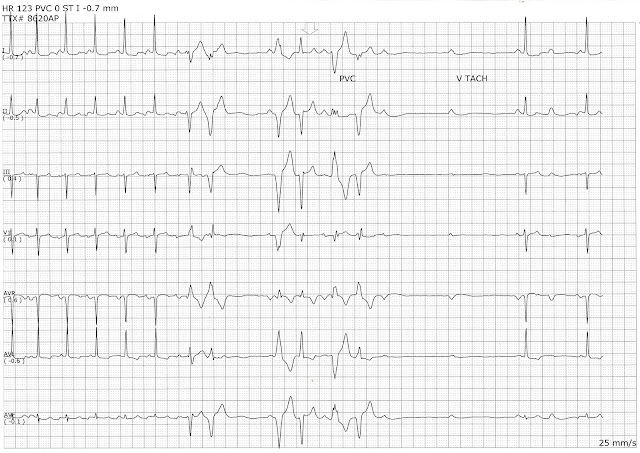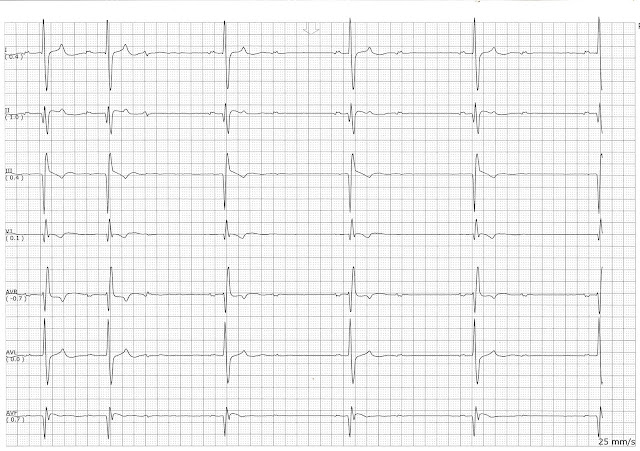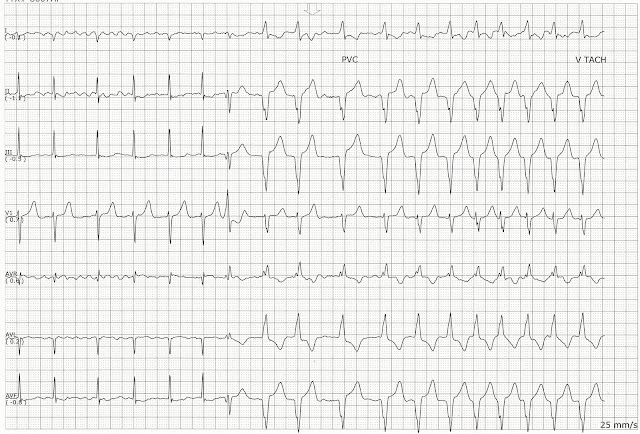Demand ventricular pacing

Demand ventricular pacing. The P waves are seen better in lead I. The underlying rhythm looks like a second degree type I.
I have been in nursing for 40 years and have worked in a variety of settings including hospice, long term care, med-surg, supervision, cath lab, ER, special procedures and critical care. I enjoy working as a float nurse because it gives me a variety of clinical experiences. I am also a CPR, ACLS, and PALS, TNCC, ENPC instructor at our local hospital.









